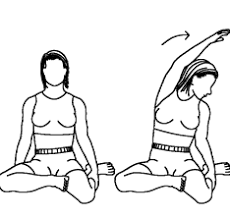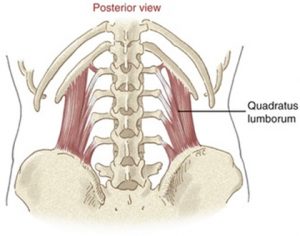ADVICE
Quadratus Lumborum; A Contributor to Lower Back Pain
Every week I see clients suffering from intermittent or chronic lower back pain and there are usually multiple causative factors. However, a major contributor, frequently overlooked is dysfunction in the Quadratus Lumborum (QL).
The QL is situated either side of the spine and whilst accessible from the back, it is in fact a very deep abdominal muscle. It attaches from the last rib and the last four vertebrae of the spine to the back of the pelvis. Its role is to help stabilize the pelvis and spine. It also flexes the torso to the side and extends (bends backwards) the lumbar spine.
A symptom of a tight QL is a deep throbbing pain in the lower back, and trigger points in the muscle may initiate a sharp pain in the hip and buttock region. Sometimes the pain might be stimulated by a repetitive action such as running or even walking.
Whilst problems in the QL may begin after an accident or from having unequal leg lengths, there are no prizes for guessing what the most common cause of a tight QL is; yes, that’s right, sitting – particularly sitting at a desk in a reclining seat, which causes the lower back muscles to relax and weaken over time. Weak back muscles mean the QL must work harder to stabilise the region and support the back and so it becomes fatigued and tight. Trigger points may develop causing referred pain in the buttock and lower back.
So, what can you do about it? Firstly, check the ergonomics of your desk set-up and counteract the effects of sitting for long periods at a desk by frequent breaks of walking around and stretching. There are also many effective stretches for the QL. Here’s one, but look online for more. Always stop if the stretch causes pain.

Sit on the floor with legs to right.
Bring your left foot to the inside of your right thigh and sit upright as shown.
Grasp the right lower leg with the right hand and place the left arm overhead.
Turn the trunk slightly to right and side bend to right.
Hold the stretch for 30 seconds and repeat on the other side.
If the problem is chronic, a sport and remedial massage therapist should be able to release the muscle and advise on self release and stretching.

